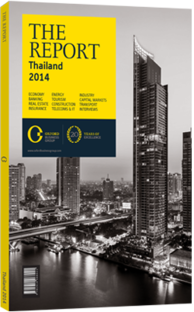OBG talks to Manit Boonchim, Executive Director, Planning Department, Tourism Authority of Thailand

Interview: Manit Boonchim
What kind of steps is Thailand taking to secure a higher-spending tourist demographic?
MANIT BOONCHIM: The focus of the 2014 Action Plan is on the development of the premium tourist market. We want to offer more quality products and services that will help tourists to understand Thailand in more sophisticated ways. Therefore, we are now focusing on niche markets such as honeymoons, sporting holidays, including golf and diving, and medical tourism. Traditionally, Thailand has been successful in generating scale in its tourism sector, with 22.3m arrivals in 2012 alone.
This new strategy constitutes a significant shift in terms of the way we want to market Thailand as we prioritise niche sectors and products. Central to this plan will be promoting the idea of “Thainess” by emphasising the social and cultural highlights of a trip to Thailand. By attracting luxury-oriented tourism, we hope to elevate our total revenues from foreign and domestic tourism to around $65bn annually.
To what extent can the tourism industry benefit from the regional integration heralded by the formation of the ASEAN Economic Community?
MANIT: The formation of the ASEAN Economic Community will be highly beneficial for the tourism industry in the country. In particular, closer coordination between the countries of the Greater Mekong Subregion will promote a number of benefits in terms of cross-border travel. Moreover, Thailand is prepared to build on its growing position as a hub for tourism in the region, as many travellers use Bangkok as a gateway for travel throughout South-east Asia.
In this respect, the government’s plans to improve the quality of the country’s transport infrastructure will complement the agenda for regional cooperation, as the anticipated construction of rail and road routes will serve to increase regional connectivity. As political and economic integration increase over time, it will be important to work closely with our neighbours so that we will all be able to enjoy the benefits of tourism.
What potential do you see for foreign investment in future service and infrastructure requirements?
MANIT: We anticipate significant investment opportunities in hotel and accommodation facilities. This trend has been evident in recent years, as the major tourist hubs in the country, including Bangkok, Chiang Mai and Phuket, have all been subject to huge investments in their hospitality sectors. However, Thailand still needs more to develop its burgeoning appeal, including museums, galleries and other cultural attractions.
More support will still be required from the government. For instance, the introduction of tax incentives along with the provision of loans would be most beneficial in fostering this kind of investment. In addition to this, further investments in infrastructure to improve transport capacity in and around busy tourist sites, ports and airports will be required in order to relieve rapidly accelerating tourist congestion in these areas.
What steps are being taken to diversify Thailand’s tourism source markets?
MANIT: The Tourism Authority of Thailand regularly engages in international roadshows and exhibitions designed to showcase the country’s potential in new markets. Most recently, we have been trying to focus our efforts on the secondary cities of our traditional markets in Europe. As there are now direct flights between secondary cities in Europe and Bangkok and Phuket, we believe there is room for additional growth.
In terms of expanding to new areas, our priority is tapping into new markets in Eastern Europe. In the Middle East, we are hoping to expand the medical tourism market across the Gulf Cooperation Council.
Therefore, the low season in Thailand for European travellers can be improved through increased visitor numbers from the Gulf as they seek to escape the hot summer months in favour of cooler climes. Finally, around half of visitors to Thailand from Africa currently hail from South Africa, so we want to expand our appeal as a destination across the continent as a whole.
You have reached the limit of premium articles you can view for free.
Choose from the options below to purchase print or digital editions of our Reports. You can also purchase a website subscription giving you unlimited access to all of our Reports online for 12 months.
If you have already purchased this Report or have a website subscription, please login to continue.

